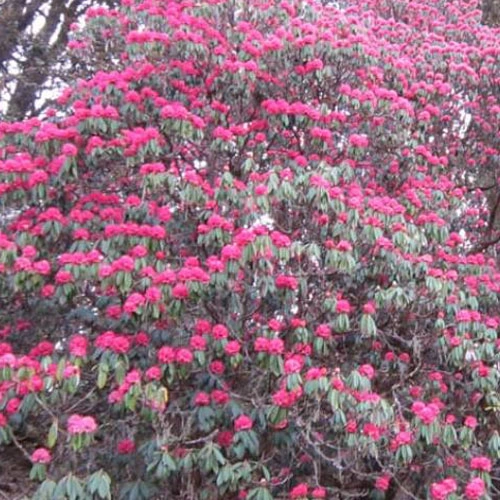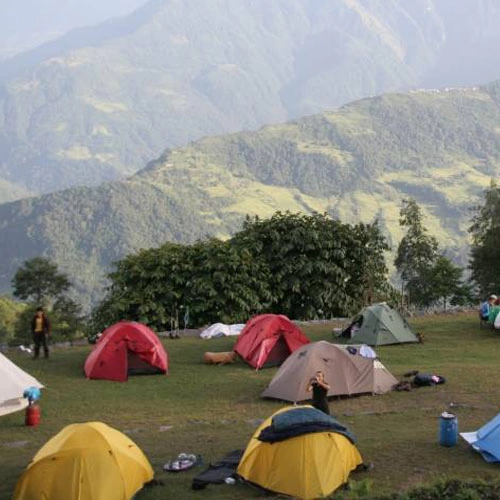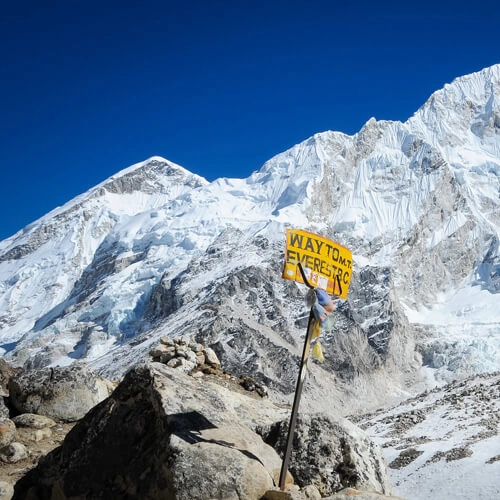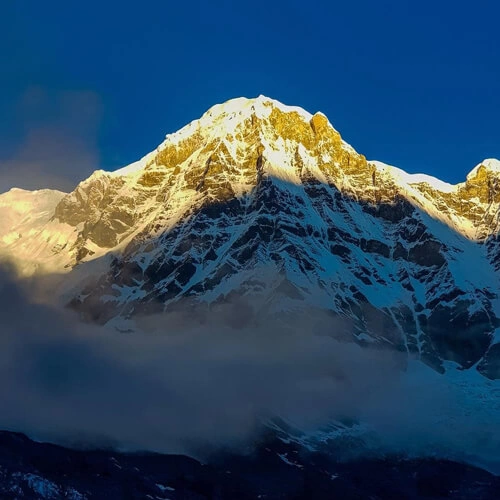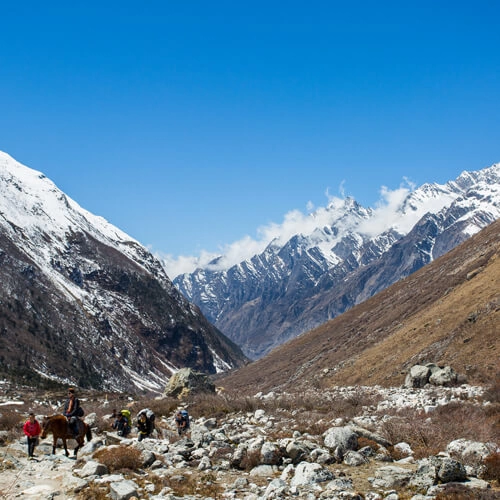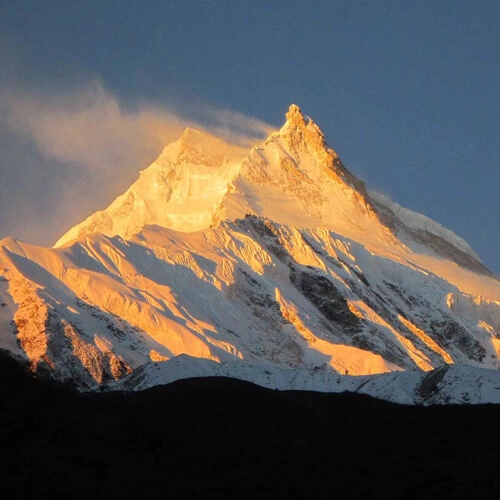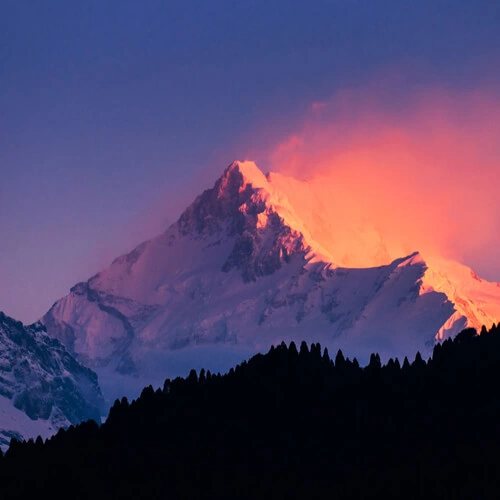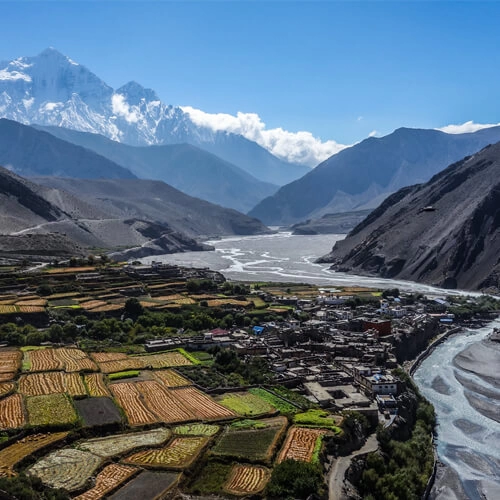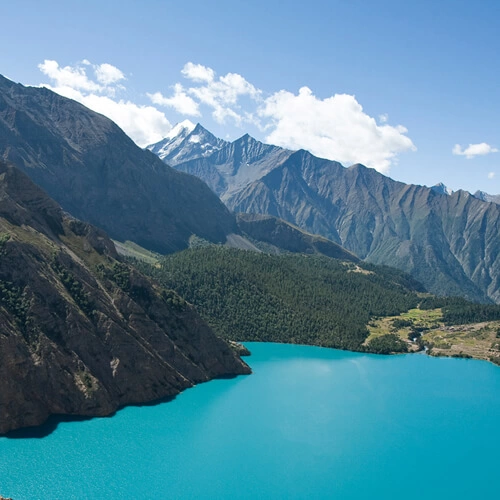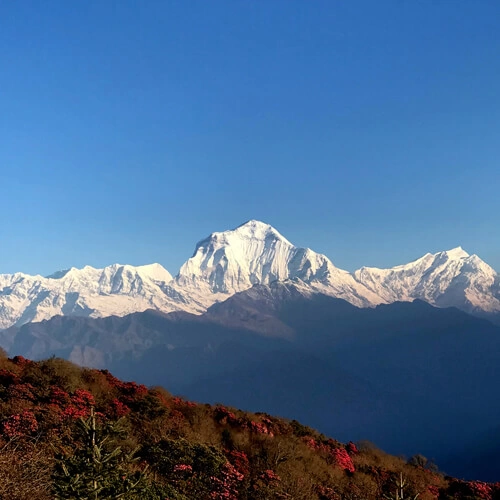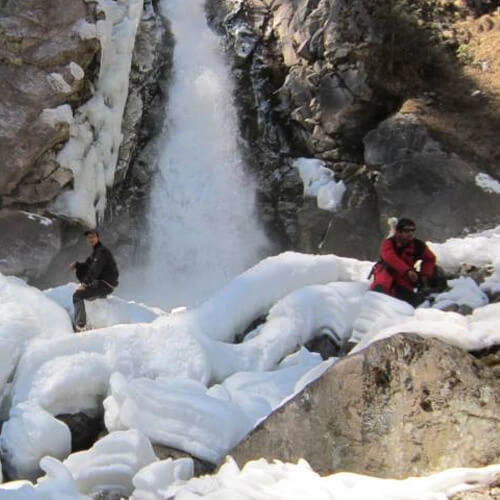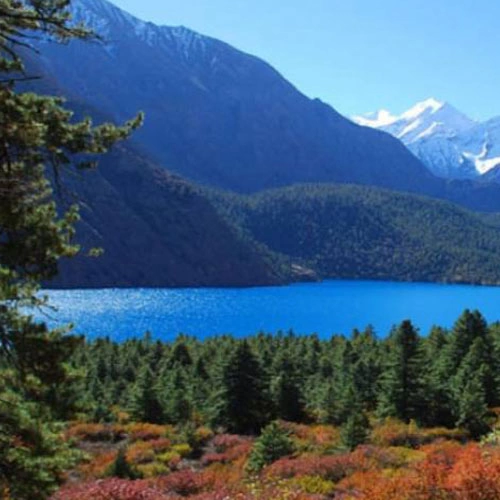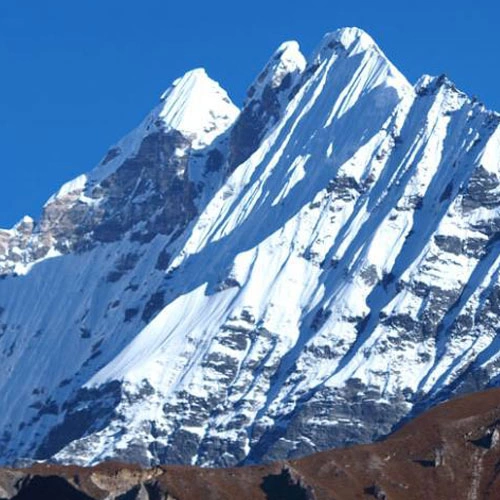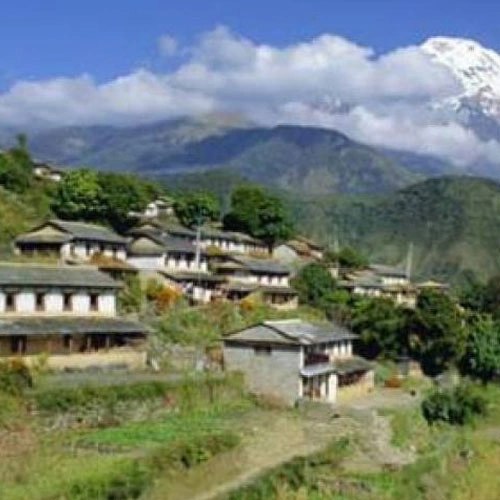Trekking
Trekking is by far Nepal’s biggest attraction. Most tourists embark on some trek or the other and many take on multiple treks before heading back home. Some avid trekkers come once every year to take on a new trek. Trekking is not only about visiting the Himalayas, but it is also the best means of seeing the country learning about its people. Walking through emerald rice fields, passing through rhododendron forests, crossing streams, and camping out on a hilltop in the wilderness with towering mountains in the background, make trekking in Nepal an unforgettable experience.
One can also do pony treks in some remote places, which is equally enthralling for visitors. Pony treks are offered mostly in western region of Pokhara, Dolpo and Lo Manthang (Mustang). The two most popular treks are the Everest Base Camp Trek and the Around Annapurna, also known as the Annapurna Circuit, as it goes right around the Annapurna range. There are many different treks offered in the Everest and Annapurna regions. Other popular regions are the Langtang, Helambu, Makalu, Manaslu, Kanchenjunga and Arun Valley. Another popular destination in the Everest region is the Gokyo Valley, known for it's majestic high alpine lakes.
Easy Treks
Tailung Trek, Arun Valley, Kathmandu Valley Trek, Pokhara to Jomsom, Pokhara Valley Trek, Ghorepani, Ghandrung, Daman, Siklis Trek
Moderate Treks
Ganesh Himal, Jugal Himal, Gosikunda Helambu, Pachpokhari, Sailung Trek, Jumla to Rara Lake Circuit, Kanchenjunga Base Camp, Rolwaling Valley, Everest Base Camp, Annapurna Base Camp, Dhorpatan circuit, Langtang Gosaikund, Muktinath, Upper Mustang, Makalu Base Camp
Difficult Treks
Ganja La Pass, Tilicho Pass, Thorung La Pass, Trashi Labsta, Dhaulagiri Base Camp, Pokhara to Jumla, Dolpa, Chola Pass, Iceland Peak Base Camp, Mera La Pass
Top Ten Trekking Sectors
- Annapurna Mountain Region
- Mount Everest Region
- Langtang / Helambu Circuit
- Arun Valley Circuit
- Mount Kanchenjunga Region
- Dolpo Sector
- Mount Dhaulagiri Region
- Mustang Sector
- Manasulu Zone
- Rolwaling Zone
Trekking Guidelines
When to Trek:
Although treks in Nepal can be organized throughout the year, October through May is considered the perfect time for trekking. The monsoon begins in mid-June and ends around mid-September making travel wet and warm. The mountain views may not be at their best as rain clouds and haze obscure the enchanting views. It’s a great time for botanists, however, as the higher valleys and meadows come alive with blossoming flowers and lush vegetation. Monsoon season doesn’t mean it's raining all the time. Besides, some of the most frequented trails will be less crowded and you may prefer a quieter time in the mountains. The upper parts of the Annapurna Circuit around Marpha, Jomsom and Muktinath lie in the rain shadow area and are perfect for trekking during the monsoon. Note: Insect repellent should be carried when trekking during the summer/monsoon months.
Autumn being the best season for trekking, excellent weather and spectacular mountain views greet trekkers as they hike up. January and February are noted for cold weather with occasional snowfall at higher elevations. Some routes may be blocked by snowfall, but the views are excellent.
Spring arrives in late February in Nepal and it’s the ideal time for those who are interested in flowers, birds and the splendors of nature. Many varieties of wild flowers, especially rhododendrons, turn the hillside into a colorful paradise.
April and May are the expedition season and the best time for mountain climbing. It is mildly warm at lower elevations but occasional haze may obscure the view of mountains. At higher elevations over 4,000 meters, the mountain views are excellent and temperatures are quite moderate even at night.
Medical Matters & Advice
Trekking in Nepal need not be considered a risky affair as far as your health is concerned. But very little medical care along the trail is available, so make sure you are physically fit and healthy before departing. In high altitudes, take it slow in order to avoid sickness. In case of serious illness or injury, prompt evacuation to Kathmandu is the best remedy. Helicopter rescue service is extremely expensive. Neither the Government of Nepal nor your embassy nor the trekking agency (if you are trekking with one) is responsible for footing the bill. Therefore, you are requested to insure for rescue operations as well.
Altitude sickness:
Altitude sickness is also known as Acute Mountain Sickness (AMS) and is a particularly important medical consideration while trekking in Nepal. Altitude sickness means the effect of altitude on those who ascend too rapidly to elevations above 3000 m. The initial symptoms of AMS are: nausea, vomiting, loss of appetite, insomnia / sleeplessness, persistent headache, dizziness, lightheadedness, confusion, disorientation, weakness, fatigue, lassitude, heavy legs, slight swelling of hands and face, breathlessness and breathing irregularity, reduced urine output. These symptoms are to be taken very seriously. In case any of these symptoms appear, immediately stop further ascent, otherwise more serious problems can occur which can even cause death, sometimes within hours. The only cure for altitude sickness is to descend to a lower elevation immediately. This must be taken seriously as there is no other cure. Acclimatization by ascending to no more than 300 to 500 meters per day above 3000 meters and proper amount of rest are the best means of preventing AMS. Literature and pamphlets published by "Himalayan Rescue Association" give detailed information on AMS .The central Immigration Office and all trekking agencies in Kathmandu distribute these pamphlets free of cost. Since these documents also give information on the list of suggested medical supplies for trekkers, it should be included in every trekker’s’ medical kit.
You may also like others tour ... please visit us at:-www.traveltoursinnepal.com
